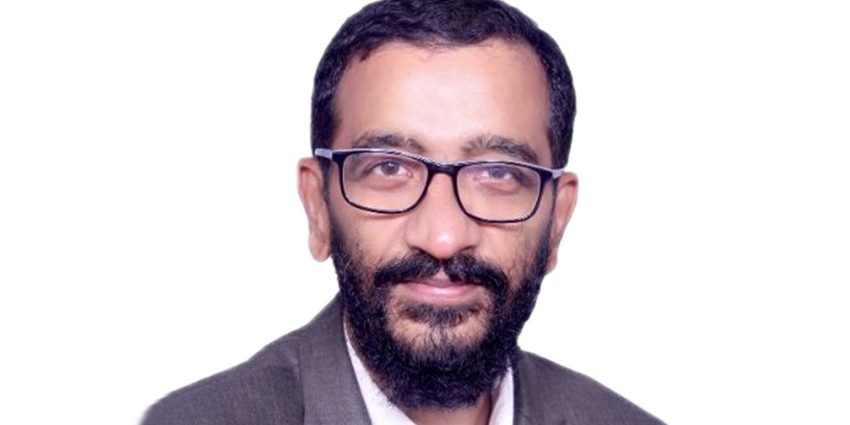In the fourth session of Day 2 of India Communication Summit 2021, Unny Radhakrishnan joined as an eminent speaker. Mr. Radhakrishnan who is currently the CEO of Digitas India (of Publicis Groupe) has over 20 years of experience and expertise in marketing communication. He has also guest lectured at prestigious institutes like IIM-A, ISB, IIT Kharagpur, and is an eminent speaker at several industry forums. In the summit, he shared his opinions on how technology has transformed the way we consume media today.
Technology has changed the media landscape
In the session’s opening, he stated, “There is not any place where technology has not created an impact on the way we communicate, especially in the realm of media.” He further added that while considering the mediums be it text, audio, video, or multimedia channels, “We are more aware of appointment viewing and on-demand consumption”. He iterated that the use of technology in media has given access to a variety of content, be it video, audio, texts, games, thereby, eliminating all boundaries of geography or language.
Radhakrishnan pointed out the considerable popularity of Korean films in India, to substantiate his opinion. He also elaborated on the concepts of Augmented Reality and Virtual Reality which have opened up untapped potential with new possibilities. To enunciate this, he stated, “If you look at our personal lives, a lot of content is being consumed on OTTs and the internet, and not on traditional broadcast platforms”.
The Upcoming Trends in Digital Media
While elaborating on trends and upcoming opportunities in digital media, Radhakrishnan stressed how independent content creators and influencers are generating their revenue through advertising, promotional content, sponsorships, and endorsements. He took everyone’s attention to the growth of Indian gamers who stream their gameplays and articulated, “In 2018, according to some database, there were hardly 50 or 60 gamers who reached popularity in India by live-streaming games, but now the number has surged to thousands”. Further, he stressed one of the unique sources of these game streamers’ revenue, which comes from the online donations they receive from their followers for streaming their gameplays.
In another interesting submission, he said, “With platforms like Substack and Scrollstack, writers and artists have their audience and they can charge them because of the micropayment option”. He exemplified his point by stating, “Globally, a lot of big journalists signed out from their publication and started their independent journalism career via these platforms’ monthly subscription revenue system, which charges 5$ or 10$ per month”.
Moving beyond micropayment for artists on these platforms, he next focused on the trend of content aggregators, in particular, OTTs in India. According to him, “There are 52 or 55 OTT platforms in India, with most of them being regional and having regional subscribers”. He elaborated on the creation of an industry that rose through the development in technology, marketing, and other such activities. He further added that this is resulting in a new wave of content creators, be it any large organization or independent artists, and thereby creating a new content-based economy.
Job Opportunities in Digital Media
While advising students present amongst the session audience, about the impact of technology in the job market of the media and communication industry, he made some insightful observations stating that when it comes to the world of media, synergy with technology is of utmost importance. “There exists opportunities in technology platforms, customer experiences, understanding customer, and content creation as well as dissemination”, he added.
He further stressed the importance of having a multifaceted understanding in several niches under any given category. He stated, “We look for a T-shaped skillset (while hiring), where people have a deep understanding of one field while having broad horizontal knowledge about multiple areas”. He further added, “Nowadays, another type of skill set which is being considered is the pi-shaped one, where one has a deep understanding of at least two fields and a broad understanding in multiple fields.”
He made another interesting remark about having the skills of a polymath, which means having an interest in multiple domains. To exemplify his point, he said, “When someone is having a medical implant, it combines people knowing the medical field, nano-materials field, and electronic fields as well.” While moving on to the opportunities in media field specifically, he stressed the significance of content creation, consumer research, data, artificial intelligence, and user experience, which are all going to provide job opportunities.
He then focused on the impact of AI in the sector of media. He pointed out that, “A company called, Pepper content, a marketing company based in Bombay, launched a new tool called PaperType.AI, where if you feed in the product description, it will generate the social-media post and the Google Ads copy for the content. These are self-learning algorithm which will continue to improve as more people use them.”
He also spoke about a US-based company called Rosebud.AI, which uses AI to generate realistic-looking artificial human models in videos to be used in advertisement projects. He concluded with the anecdote, “The best advice I could give a 15-year-old, don’t rely on the adults too much. Most of them mean well, but they just don’t understand the world.” Also, he advised the students to not stress about cautioning remarks from elders, as “nobody knows what will happen five years from now”. He further added, “The ability to learn, and in particular, meta-learning, is becoming the most important skill-set to look at.”
The author Abhirup Sengupta is associated with Adamas University Media School.







